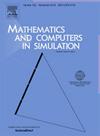A novel image gravity transform based on least significant bit in image steganography
IF 4.4
2区 数学
Q1 COMPUTER SCIENCE, INTERDISCIPLINARY APPLICATIONS
引用次数: 0
Abstract
Information transmission technology has been developing rapidly in recent years, and high-quality and safe information transmission is one of the major challenges in today’s world. Steganography is a safe data transmission technique in which the data is embedded and hidden in a media content before sending it to the network. Text-in-image steganography is one of the important types of steganography that has various applications such as military, research and data mining. Designing an algorithm with high security and accurate retrieval of hidden data is one of the main challenges in text-in-image steganography. Hence, In this paper, a new efficient text-in-image steganography algorithm is proposed to enhance the security of hidden data and accuracy of data retrieval. This algorithm is composed of two components including data hiding and data retrieval. In the first component, the original data is hidden in the original Image and generate the stegano image. To this end, the algorithm of “finding the best non-uniform locations” (FBNL) is introduced. in addition the original text is encrypted by IGT algorithm. After that, the encrypted text is hidden in the best non-uniform location of image that founded by FBNL. The second component is executed when the original data is needed. in the start of this component, the FBNL algorithm runs and find the best non-uniform location and the inverse IGT (IIGT) algorithm uses this locations and recovers the original data. For evaluation, several datasets is employed for images including Cifar, Mnist, Pascal and LFW. In addition, the text data is retrieved from UCI dataset. The evaluation results show that the proposed algorithm has an improvement between 4.6 and 58.4 percent in terms of quality, error, security and time compared to other investigated algorithms in different scenarios.
图像隐写中基于最低有效位的图像重力变换
信息传输技术近年来发展迅速,高质量、安全的信息传输是当今世界面临的主要挑战之一。隐写术是一种安全的数据传输技术,在将数据发送到网络之前,将数据嵌入和隐藏在媒体内容中。文本-图像隐写是一种重要的隐写技术,在军事、科研和数据挖掘等领域有着广泛的应用。设计一种高安全性、准确检索隐藏数据的算法是图像中文字隐写的主要挑战之一。为此,本文提出了一种新的高效的图像中文字隐写算法,以提高隐藏数据的安全性和数据检索的准确性。该算法由数据隐藏和数据检索两部分组成。在第一个组件中,将原始数据隐藏在原始图像中,生成隐写图像。为此,引入了“寻找最佳非均匀位置”(FBNL)算法。此外,原始文本采用IGT算法加密。之后,加密文本被隐藏在FBNL建立的图像的最佳非均匀位置。第二个组件在需要原始数据时执行。在该组件开始时,运行FBNL算法并找到最佳非均匀位置,逆IGT (IIGT)算法使用该位置并恢复原始数据。为了评估,我们使用了几个数据集,包括Cifar、mist、Pascal和LFW。此外,文本数据从UCI数据集中检索。评价结果表明,在不同场景下,与已有研究算法相比,该算法在质量、误差、安全性和时间方面的改进幅度在4.6 ~ 58.4%之间。
本文章由计算机程序翻译,如有差异,请以英文原文为准。
求助全文
约1分钟内获得全文
求助全文
来源期刊

Mathematics and Computers in Simulation
数学-计算机:跨学科应用
CiteScore
8.90
自引率
4.30%
发文量
335
审稿时长
54 days
期刊介绍:
The aim of the journal is to provide an international forum for the dissemination of up-to-date information in the fields of the mathematics and computers, in particular (but not exclusively) as they apply to the dynamics of systems, their simulation and scientific computation in general. Published material ranges from short, concise research papers to more general tutorial articles.
Mathematics and Computers in Simulation, published monthly, is the official organ of IMACS, the International Association for Mathematics and Computers in Simulation (Formerly AICA). This Association, founded in 1955 and legally incorporated in 1956 is a member of FIACC (the Five International Associations Coordinating Committee), together with IFIP, IFAV, IFORS and IMEKO.
Topics covered by the journal include mathematical tools in:
•The foundations of systems modelling
•Numerical analysis and the development of algorithms for simulation
They also include considerations about computer hardware for simulation and about special software and compilers.
The journal also publishes articles concerned with specific applications of modelling and simulation in science and engineering, with relevant applied mathematics, the general philosophy of systems simulation, and their impact on disciplinary and interdisciplinary research.
The journal includes a Book Review section -- and a "News on IMACS" section that contains a Calendar of future Conferences/Events and other information about the Association.
 求助内容:
求助内容: 应助结果提醒方式:
应助结果提醒方式:


